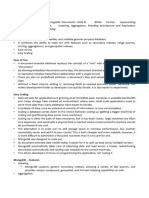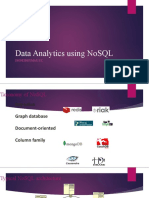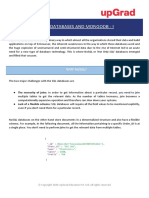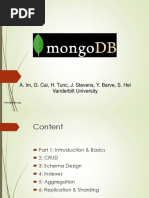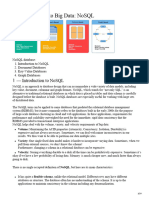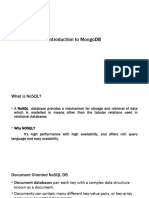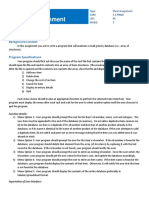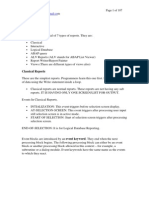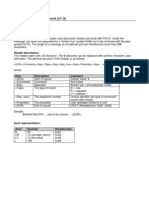0% found this document useful (0 votes)
17 views41 pagesBig Data-Unit 4
NoSQL databases, designed for flexibility and scalability, store data in various formats such as documents, key-value pairs, and graphs, making them suitable for handling large volumes of unstructured or semi-structured data. MongoDB, a popular NoSQL database, utilizes JSON-like documents and offers features like schema-less design, high performance, and rich query capabilities. Apache Spark, an open-source distributed computing framework, is optimized for big data processing and supports various workloads, including batch and real-time data processing, with key components like RDDs and Spark SQL.
Uploaded by
ishita17tyagiCopyright
© © All Rights Reserved
We take content rights seriously. If you suspect this is your content, claim it here.
Available Formats
Download as PDF, TXT or read online on Scribd
0% found this document useful (0 votes)
17 views41 pagesBig Data-Unit 4
NoSQL databases, designed for flexibility and scalability, store data in various formats such as documents, key-value pairs, and graphs, making them suitable for handling large volumes of unstructured or semi-structured data. MongoDB, a popular NoSQL database, utilizes JSON-like documents and offers features like schema-less design, high performance, and rich query capabilities. Apache Spark, an open-source distributed computing framework, is optimized for big data processing and supports various workloads, including batch and real-time data processing, with key components like RDDs and Spark SQL.
Uploaded by
ishita17tyagiCopyright
© © All Rights Reserved
We take content rights seriously. If you suspect this is your content, claim it here.
Available Formats
Download as PDF, TXT or read online on Scribd
/ 41





